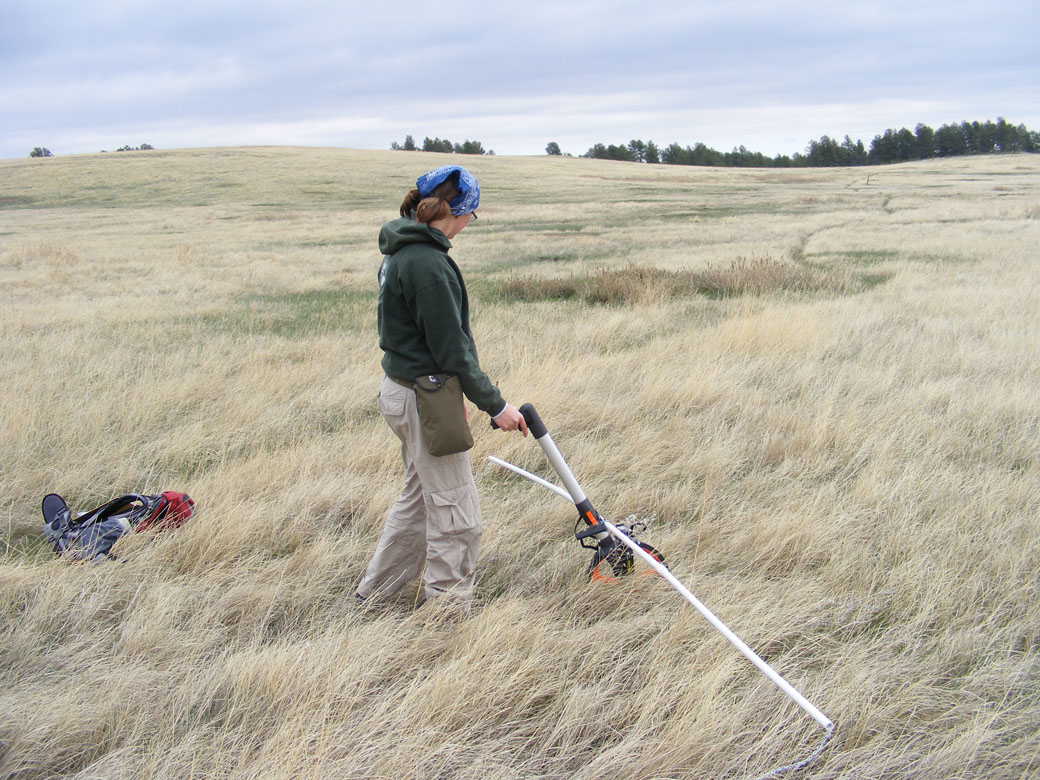
USD researchers strive to protect South Dakota wildlife
One team of University of South Dakota researchers is actively searching for a deadly plague on the prairies of South Dakota.
Hugh Britten, a biology professor, and Erica Mize, a Ph.D. biology student, have been studying sylvatic plague, a disease that is decimating the prairie dog population of the state.
“It’s the wildlife form of bubonic plague,” Britten said. “We have seen outbreaks of plague in prairie dog colonies in Montana starting in the late 1980s.”
Britten said the plague, which is carried by the flea Oropsylla hirsuta, is thought to have first come to the United States in the 1910s via rats on ships harbored in San Francisco. The disease then spread eastward until it suddenly stopped, virtually on the state line of South Dakota.
“It looked like there was a hard environmental border,” Britten said.
The respite from the plague didn’t last long however.
“In 2004 it started to be suspected on the Pine Ridge Indian Reservation, and after that it was clear that we had sylvatic plague killing our prairie dog colonies,” Britten said.
Shaun Grassel, a wildlife biologist for the Lower Brule Sioux Tribe, has helped Britten and Mize with their research. He said the plague has killed about 165,000 prairie dogs since 2011.
“Our landscape has changed pretty dramatically in the last three years,” Grassel said.
Mize said the plague, which is mostly confined to various animal species including the black-tailed prairie dog, can sometimes be transmitted to humans.
“Every year there’s somewhere between one and ten cases of bubonic plague in humans,” Mize said. “Those are mostly centered around the four corners area. It’s thought that most of those cases originated from prairie dog colonies.”
Mize said human deaths from bubonic plague in the U.S. are rare and the disease is easily treatable.
“In humans it’s easily treated with antibiotics if you know that you have (the) plague,” Mize said. “There’s been no human cases of bubonic plague in humans here in South Dakota, so it would be easy for a doctor to miss.”
Mize and Britten said their work focuses mostly on finding out how the plague hops from one prairie dog colony to another in hopes of finding a way to stop the disease and preserve the species in the state.
To do this the researchers travel to prairie dog colonies and take samples from burrows to test for the plague.
Britten said the black-tailed prairie dogs function as a “keystone species.”
“Black-tailed prairie dogs make it possible for a pretty wide variety of plants and animals, including things like tiger salamanders, to exist on the prairie,” Britten said.
One of the many species that exists due to the black-tailed prairie dog is the black-footed ferret, a species once thought to be extinct. The ferrets feed on prairie dogs and are also susceptible to the plague.
Mize and Britten said they believe the ferrets may be spreading the disease to the prairie dog colonies.
“Prairie dogs don’t appear to be the most likely culprit, based on population genetic methods, to be spreading these fleas around the landscape,” Mize said. “Ferrets seem like a great choice for this because they do have large home ranges compared to prairie dogs.”
Mize said the team’s theory and data, along with concerns about the effectiveness of vaccinations used on black-footed ferrets, has been submitted to a scientific journal and is undergoing peer review. Mize said she is waiting to see if the paper will be published.
In the meantime, Mize has been awarded the Wildlife Student of the Year award by the South Dakota chapter of the Wildlife Society for her part in the research. She is the first student from USD to be awarded the honor. The award has traditionally been given to South Dakota State University students.
“It’s really nice that they looked at the quality of work I’ve been doing and how active I’ve been in the chapter and that was recognized,” Mize said.
As for the prairie dogs, the future may still be bright.
“Currently a group from USGS (United States Geological Survey) has developed an oral plague vaccine that is being dropped on the ground in little peanut butter bits,” Mize said. “It’s under trials right now as we speak.”
(Photo: Erica Mize, a Ph.D student at the University of South Dakota, uses a device to swab a prairie dog tunnel for sylvatic plague in Theodore Roosevelt National Park. Mize was recently awarded the Wildlife Student of the Year award. Submitted photo / The Volante)

